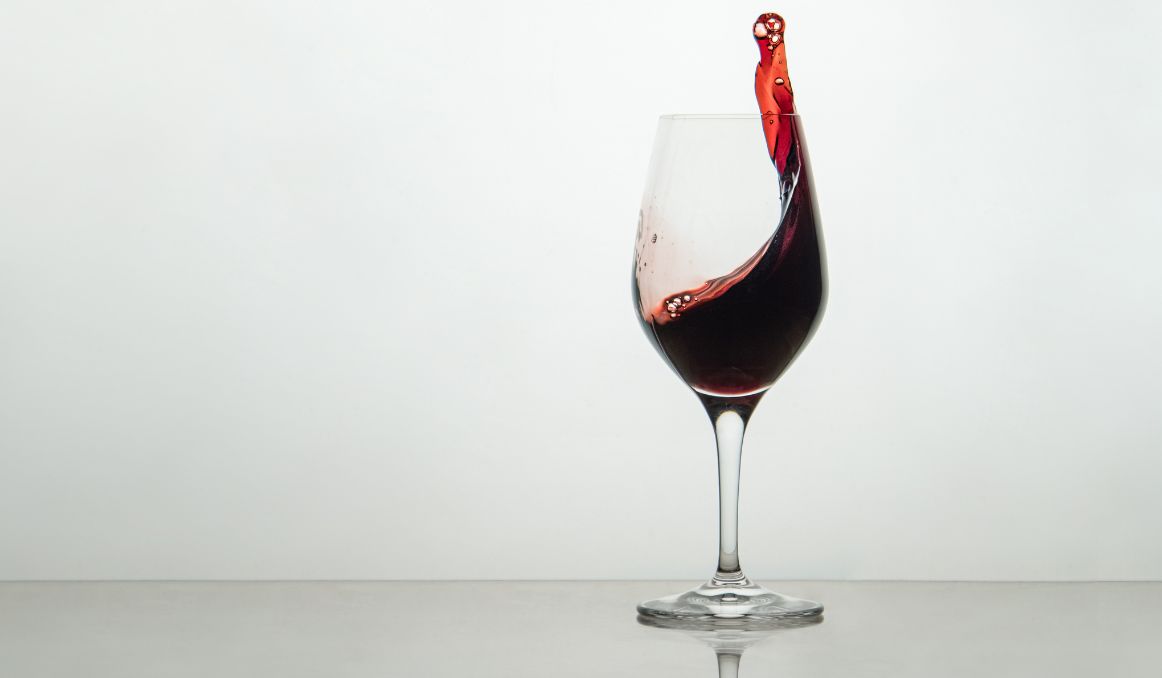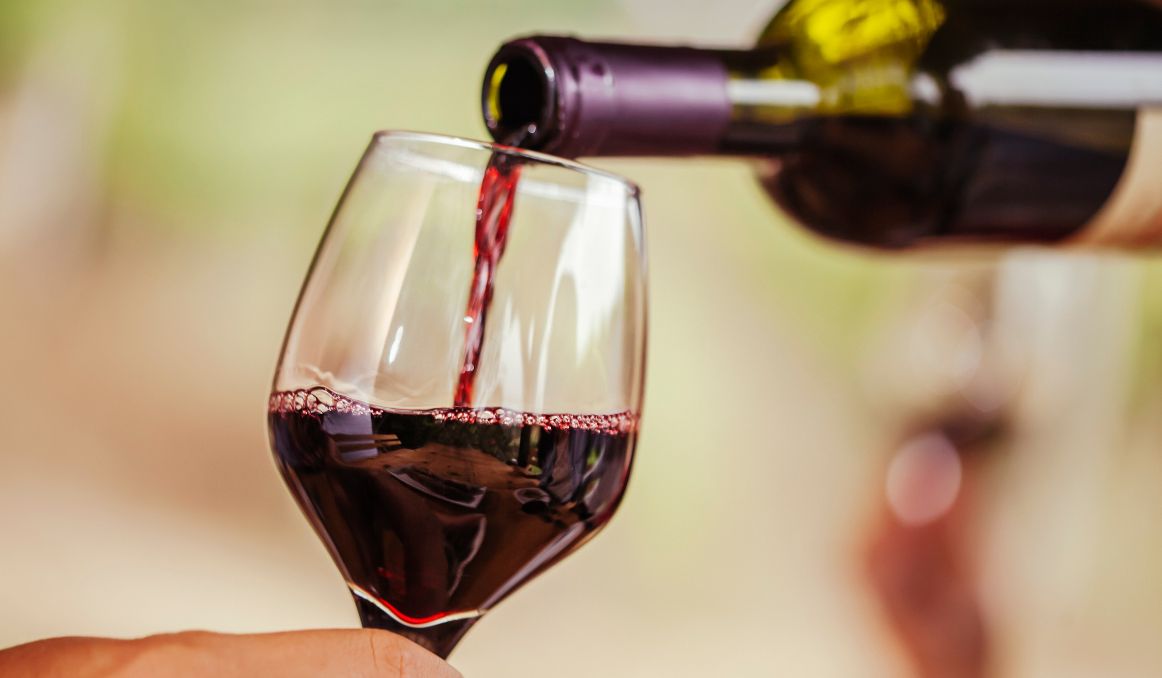Chewy Wine: Meaning and Examples
If you’ve never heard the expression chewy wine, welcome to the wine world. This term is among many others, like the words rancio, muscular, brambly, and many more used to describe the wine drinkers experience with wine.
Chewy wine is an interesting term among the rest because it does actually pretty accurately define what exactly is happening in your mouth when you drink this type of wine.
In short, you feel like you need to chew your wine.
How does this happen?

How Wine Is Made
Let us begin with a brief description of how wine is made.
Among fermented beverages, wine is, perhaps the simplest to make. Indeed, wine was probably being made in some form or another long before humans even arrived on the scene.
Think about it, wine is simply fermented grape juice.
And all you really need to make grape juice is crushed grapes.
So it requires no stretch of the imagination to see how grapes in nature were crushed by natural forces, either animals or weather, or simply falling from the tree, and those grapes would then be fermented, naturally, by whatever local yeast was in the area in search of sugar.
Et voilà! You now have wine.
So once humans came along, it is most likely that wine was an accidental discovery. Some grape farmer probably stored grapes in a large container, and at the bottom of that container some of the grapes would’ve been crushed, those crushed grapes would have attracted yeast, and, never one to waste food or drink, the farmer would have served or at the very least drunk himself or herself the juice at the bottom of the container.
Now the entire community would benefit from this marvelous discovery.
From there, of course, the wine process was “perfected.”
But it is all in all still quite simple.
Super sweet grapes are harvested for their fermentable sugars, those grapes are crushed, allowed to sit in their own juices, yeast is added, it ferments, then everything is strained, and the liquid is served as wine.
See? Simple.
But if it is so simple, how do we get such a wide variety of types of wine?
Grapes
Mostly, it’s the grapes.
There really are so many different kinds of grapes, even among the sweetest of grapes, that we can get wines that are extra dry, extra sweet, very mild, fruity, floral, and so on.
As of the latest data Winemag reports that there are over 10,000 different varieties of wine grapes.
If you’ve tasted different grapes, even a darker purple and the lighter purple, not to mention a purple versus a green, or a black versus a green, then you know the difference in texture and sweetness has a wide range.
Then it is easy to say that what primarily influences wines flavor, aroma, and texture will be the grapes used to make the wine.
Fine. But what is it in the grape that makes a grape chewy?
Tannins
When it comes to grapes and wine, the largest influence on flavor, aroma, and texture is going to be the tannins.
Tannins are a group of bitter and astringent chemical compounds found abundantly in nature. Typically we find tannins in bark, leaf, stem, and even skin of plants.
It makes sense then that grapes would be rich in tannins as they have pretty much every element required for tannins except bark. Thus, the longer the crushed grapes are allowed to sit in their must, the more rich in tannins the wine will be.
Indeed, many vintners make sure skins, stems, and even leaves sit in the must for a lengthy period of time in order to impart those tannins.
Add to this steeping that some wines are then aged in oak barrels, which are essentially bark, and you have an even more tannin rich wine.
Mouthfeel

This bitter astringency that comes from the tannins in the wine has a chemical affect on our mouths that leaves us feeling dry and thirsty, or longing for something fatty, like cheese, to add moisture back into our mouths.
This effect, the bitter astringency, is what is called chewy in the wine world.
The effect is not usually an unpleasant one. Many vintners seek it out and then recommend a fatty red meat or fatty cheeses to be served alongside their chewy wines.
The Yeast Factor
Of course, this mouthfeel can go too far.
Some wines can leave the drinker feeling parched. This result can come from a grape that is particularly naturally rich in tannins, or a new vintner, who is still learning about the steeping process, or it could simply be a matter of the wine not having aged long enough.
Yeast, and particularly yeast that is wild and local to the wine and the grapes, does an excellent job of cleaning up and balancing out unwanted and too strong flavors.
Aging wine has a double mellowing affect. Tannins naturally mellow out over time, and yeast will continue to consume compounds in the wine, “mopping up” unwanted flavors.
So quite often, as a winemaker, if you find a new batch of wine to be too chewy, too rich in tannins, the easy fix is to simply let it age for a bit longer.
Examples of Chewy Wine
Sangiovese is are a perfect example of chewy wine. The grapes are grown in the warm and dry Tuscan climate, they are already rich in tannings, and then the wine is aged in oak barrels.
Other examples of chewy wine include a Nebbiolo, made from grapes, grown in northern Italy, a Shiraz, made from grapes grown in France and Australia, and a Tempranillo, made from grapes grown in Spain.
What each of these wines has in common is grapes rich in tannins and wine aged in barrels.
So, if you are hoping to create your own chewy wine, you now know where to start.
Cheers!
Passionate about the wine and/or beer making process? So are we! If you’re interested in finding out how you can use our technology to control fermentation and monitor your yeast, save work hours and improve the cost-efficiency of your business, drop us a line at [email protected] or check out our product pages:
- Oculyze FW (Fermentation Wine) Yeast Cell Counter App + Hardware
- Oculyze BB 2.0 (Better Brewing) Yeast Cell Counter App + Hardware
Also, you can now get access to a fully functional demo account to test your yeast via our Web App. Completely free of charge and with no commitment to purchase.
Sources:


